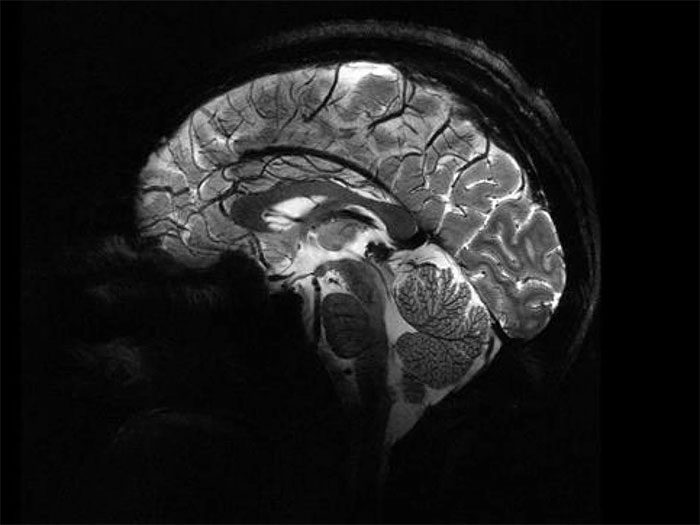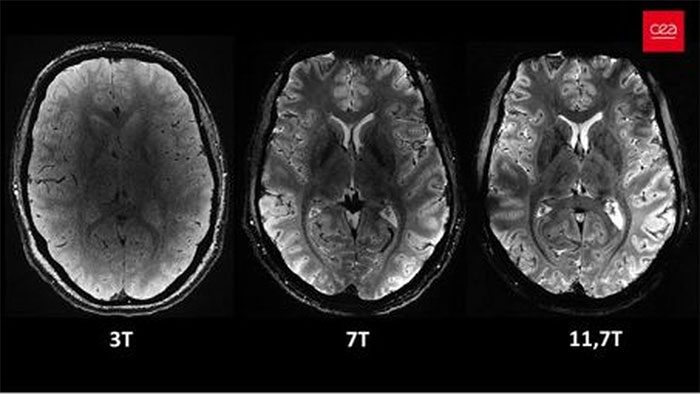The prospects opened up by this unique machine in the world are immense, helping scientists establish better diagnoses for various brain diseases.
These historical images were captured by the Iseult MRI scanner at the research center of CEA, the French Atomic Energy Commission.

Human brain scanned by the Iseult MRI scanner. (Photo: CEA).
The research director at CEA, Nicolas Boulant, stated: “It is an unknown world that is unfolding before us, and scientists are eager to explore it.”
“With these images, we can see quite spectacular details. They inform us about anatomical features such as veins or the layers of the cortex that were previously unattainable.”
Thanks to the Iseult MRI scanner, researchers can dissect our brain with astonishing accuracy: approximately one millionth of a meter or the thickness of four human hairs.
230,000 Times More Powerful than Earth’s Magnetic Field
These results mark the pinnacle of researchers’ efforts after more than 20 years of work, with a total cost of around 200 million euros.
Researcher Anne Isabelle Etienvre (CEA) noted that this machine generates a record-breaking magnetic field of 11.7 Tesla, which is 230,000 times stronger than the Earth’s magnetic field. It is important to note that the higher the magnetic field, the greater the resolution of the images.

The human brain’s axis. (Photo: CEA).
The MRI scanner is currently located at the CEA Neurospin neuroimaging center in Saclay, France.
It features a gigantic electromagnet with a diameter of 5 meters, a length of 5 meters, and weighs over 130 tons, powered by currents of up to 1,500 Amperes.
This masterpiece consists of 182 kilometers of superconducting niobium-titanium alloy wire wound in a coil. To operate, it must be cooled to a temperature of -271.35°C, using 7,500 liters of superfluid helium.
A Historic Moment
Images of the brains of volunteers were presented to the public on April 2, marking a historic moment.
For the first time in the world, our brains have been captured with high precision. This is expected to illuminate medical and scientific knowledge, revealing great promises for the future.
Thanks to functional analyses, this MRI scanner can help us better understand how the brain operates in cognitive processes such as reading and language learning.
At the same time, the machine can also explore the biochemical activity of the brain or map the distribution of lithium, glucose, glutamate, or iron present in the brain. These substances are related to various mental illnesses (bipolar disorder, schizophrenia) or neurodegenerative diseases.
For instance, detecting excess iron in the brain could help diagnose Parkinson’s disease many years in advance. Currently, the diagnosis of this disease is often very late.
The ability for scientists to identify processes occurring in the brain at earlier stages may help us understand this disease better, or even allow for the research and development of new treatment methods.




















































